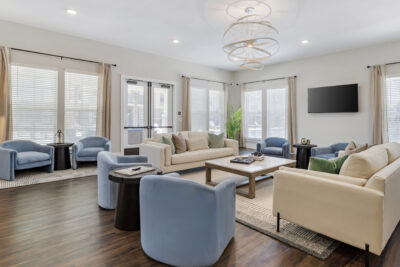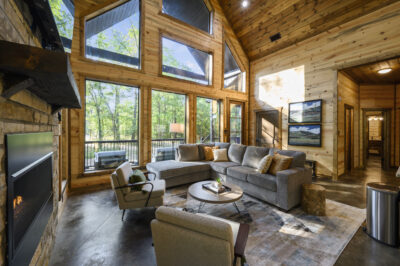The landscape of senior living design has undergone a remarkable transformation over the years, evolving from basic, utilitarian structures to vibrant, community-focused environments. This evolution reflects broader societal changes, technological advancements, and a deeper understanding of the needs and preferences of seniors. In this article, we’ll explore the historical context of senior living design, current trends shaping the industry, and predictions for the future, all while emphasizing the importance of thoughtful interior design in creating spaces where seniors can thrive.
Early Beginnings: Almshouses and Basic Care
The roots of senior living can be traced back to the 17th and 18th centuries, when almshouses were established to provide basic care for the elderly poor. These institutions were primarily focused on meeting essential needs such as shelter and food, often neglecting the dignity and personal fulfillment of their residents. The design of these early facilities was stark, utilitarian, and lacking the warmth and comfort that modern seniors expect today.
The Rise of Skilled Nursing Facilities
The 20th century marked a significant shift in senior living design with the emergence of skilled nursing facilities. These establishments were modeled after hospitals and prioritized functionality and safety. However, the sterile environment often came at the expense of comfort and personalization. As the aging population grew and medical needs became more complex, the impersonal nature of these facilities highlighted the need for a more human-centered approach to elder care.
Assisted Living: A New Balance
In the latter part of the 20th century, assisted living communities began to emerge, striking a balance between independence and security. These spaces embraced a more holistic approach, catering to the physical, psychological, and social well-being of residents. Inspired by boutique hotels and luxury resorts, modern communities now feature elegant lobbies, art installations, cozy libraries, and outdoor courtyards. They now emphasize wellness, sustainability, comforting interior design, and healthy lifestyles, reflecting a commitment to creating environments where seniors can thrive.
Current Trends in Senior Living Design
The Influence of the Baby Boomer Generation
As the Baby Boomer generation enters retirement, their unique preferences are reshaping the design of senior living environments. This generation values family, loyalty, and financial stability, and they expect their living spaces to reflect these values. Today’s seniors are looking for communities that provide care while maximizing independence and supporting active engagement.
The Importance of Outdoor Spaces
The COVID-19 pandemic has underscored the importance of outdoor spaces in senior living communities. Access to well-designed, accessible outdoor areas has become vital for residents’ well-being. Communities are now prioritizing courtyards, balconies, and rooftop lounges where seniors can enjoy nature, socialize safely, and engage in physical activity.
Cultural Influences on Senior Living Design
Prior to today’s standards, senior living interiors often relied on a one-size-fits-all approach. Décor was generally bland and neutral, designed for utility rather than personal expression or cultural relevance. Communities largely overlooked residents’ individual backgrounds, beliefs, and aesthetic preferences, resulting in environments that felt impersonal and disconnected from residents’ life stories and cultural identities.
Modern senior living design recognizes that today’s older adults come from diverse cultural, racial, and socioeconomic backgrounds and have distinct personal histories, tastes, and expectations. As a result, the interior design is shifting toward more inclusive and personalized environments that reflect the rich tapestry of residents’ lives.
By learning from global practices and examining diverse approaches to senior living design, industry professionals can gain valuable insights into creating environments that nurture health, happiness, and longevity.
Design Solutions for Enhancing Quality of Life
Fostering Social Interactions
Creating spaces that encourage social engagement is crucial for senior living communities. In previous environments, there were few designated communicable areas beyond dining and TV rooms. Today, fitness centers, art studios, libraries, and theaters provide residents with diverse opportunities to connect and engage in meaningful activities. Public areas like bistros and life enrichment rooms foster a sense of community and belonging.
Wellness and Biophilic Design
In past decades, minimal attention was paid to the mental or emotional impact of design. By incorporating biophilic design elements, interior designers can help enhance the mood and well-being of residents. These features include natural materials, soft lighting, indoor plants, calming colors, sensory-friendly design elements, and an abundance of natural light.
Personalization and Resident Control
Empowering residents with freedom over their environment is essential for maintaining dignity and safety. While communities often had rigid layouts with little room for personal preferences, today’s spaces offer open floor plans, customizable apartments, and flexible common areas to support autonomy and allow residents to shape how they live in
Future Predictions for Senior Living Design
As we look to the future, a crucial question is, “How can we balance affordability with promoting residents’ quality of life?” Addressing this challenge will require innovative design solutions that prioritize both cost-effectiveness and the well-being of seniors when creating their spaces.
Additionally, understanding and addressing the unspoken needs of the Baby Boomer generation will be critical in shaping future senior living communities. By creating environments that support residents in living on their terms, designers can enhance satisfaction and overall quality of life.
The evolution of senior living design reflects a profound transformation in how we approach aging and care for our elderly population. By understanding the historical context, current trends, and future predictions, designers and industry professionals can continue to innovate – creating communities that meet the diverse needs of seniors and enrich their lives in meaningful ways. As we embrace the future of senior living design, the focus must remain on designing environments that prioritize dignity, wellness, and a sense of belonging for all residents.s with confidence. As the industry evolves, we remain focused on finding new ways to deliver inspired, cost-conscious designs.





